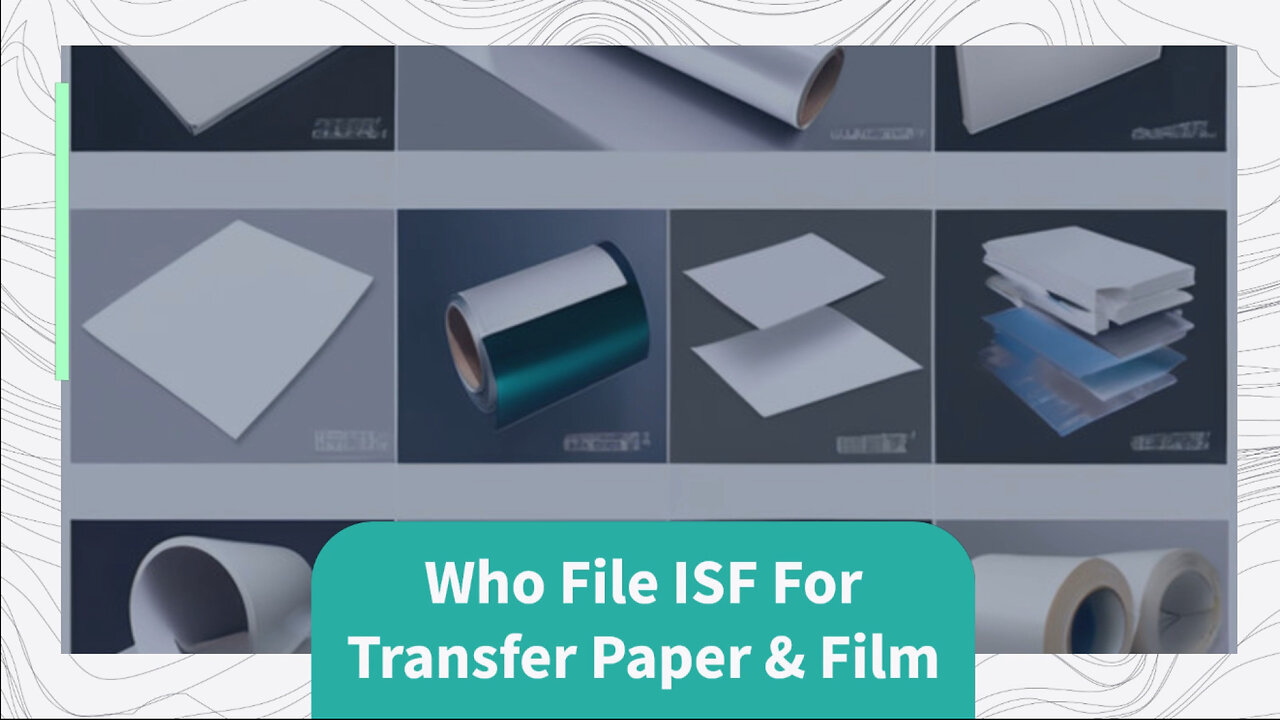Premium Only Content

Demystifying ISF for Transfer Paper Film: Who Should File and Why
ISF Filer || isf@isffiler.com || 858-280-9374 || www.isffiler.com
In summary, the responsibility for filing the Importer Security Filing (ISF) for transfer paper film lies with the importer or their customs broker. The ISF must be filed at least 24 hours before the cargo is loaded onto the vessel. Importers can choose to file the ISF themselves or work with a licensed customs broker. Hiring a customs broker, such as ISFFiler, can provide expertise in navigating customs regulations and ensuring compliance. The ISF filing process for transfer paper film includes gathering information such as manufacturer, shipper, consignee, and HTS codes. Additional details about the composition of the transfer paper film may also be required. Collaboration among all stakeholders involved in the shipment is essential for a smooth ISF filing process. Compliance with ISF requirements offers benefits such as streamlined customs clearance, reduced risk of inspection delays, and enhanced supply chain visibility.
#usimportbond #isfcustomsbroker #uscustomsclearing #isfentry
Video Disclaimer Here: This video is intended for educational purposes and has no affiliation with US government entities.
00:26 - ISF Overview and Responsibility: The Importer Security Filing (ISF) is a mandatory requirement by U.S. Customs and Border Protection for cargo arriving by ocean vessel. The importer of record, typically the owner, purchaser, or consignee, is responsible for filing the ISF, either personally or through a licensed customs broker.
02:05 - Filing Process and Collaboration: Filing the ISF for transfer paper film involves providing detailed information about the shipment, such as the manufacturer and consignee, and must be completed at least 24 hours prior to loading. Effective communication among involved parties, including manufacturers and shipping agents, is essential for accurate filing.
02:50 - Benefits of Compliance: Timely and accurate ISF filing not only helps avoid penalties and delays but also streamlines the customs clearance process, enhances supply chain visibility, and allows for better inventory planning and coordination.
-
 57:55
57:55
Man in America
11 hours agoDisturbing Signs America Is Becoming a Technocratic Slave State w/ Shannon Joy
51.7K45 -
 LIVE
LIVE
FusedAegisTV
1 day agoOFFICIAL Evo 2025 Day 3 Co-Stream - Las Vegas, NV ∥ Top 8 FINALS! SF6, Tekken 8 & MORE
475 watching -
 2:53:44
2:53:44
Barry Cunningham
6 hours agoRUSSIAGATE TREASON IS REAL! COWARD DEMOCRATS FLEE TEXAS! ( AND MORE NEWS)
60.2K42 -
 18:36
18:36
Forrest Galante
6 hours agoI Found The Ocean’s Most Venomous Snake and This Happened…
34.4K9 -
 LIVE
LIVE
SpartakusLIVE
7 hours agoSpartakus Sunday SOLOS to end your weekend with UNCONTROLLABLE HYPE
515 watching -
 2:11:25
2:11:25
vivafrei
15 hours agoEp. 275: Maxwell's Plea Deal Argument! Rogue Judges! Nuclear War? Trans Lawsuits! Crypto AND MORE!
114K224 -
 4:43:09
4:43:09
Due Dissidence
14 hours agoTucker and Fuentes TRADE BLOWS in MAGA Civil War, Burr TRIGGERS Shapiro, Huckabee Visits GHF Site
48.6K37 -
 9:07:27
9:07:27
GritsGG
11 hours agoWin Streaking All Day! Most Wins 3230+ 🧠
77.6K2 -
 3:53:43
3:53:43
Mally_Mouse
9 hours agoSpicy *Sunday*!! - Let's Play!
46.7K1 -
 2:57:30
2:57:30
megimu32
5 hours agoOFF THE SUBJECT: Rock Band Night! Let’s Shred & Hang!
32.5K2